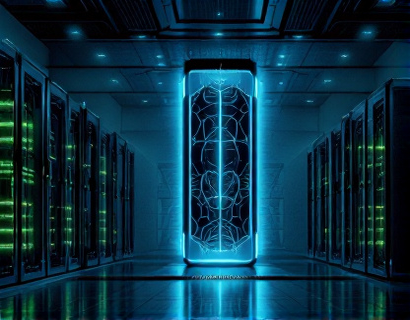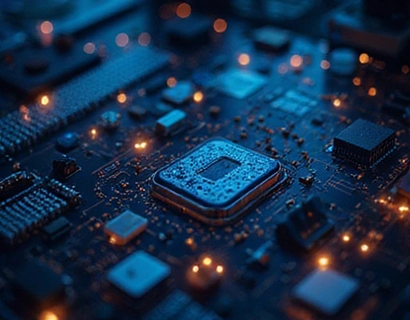Blockchain-Enhanced Registry Software: Revolutionizing Data Management
In an era where data is the new currency, the importance of robust, secure, and efficient data management systems cannot be overstated. Traditional registry management systems often struggle with issues such as data integrity, security, and transparency. The advent of blockchain technology offers a transformative solution, providing a decentralized and immutable ledger that can revolutionize the way organizations manage their data. This article delves into the capabilities of blockchain-enhanced registry software, exploring how it can enhance security, transparency, and efficiency in data management for professionals and enthusiasts alike.
Understanding Blockchain Technology
Before diving into the specifics of blockchain-enhanced registry software, it's essential to grasp the fundamental concepts of blockchain technology. At its core, a blockchain is a distributed database that maintains a continuously growing list of records, called blocks, which are linked and secured using cryptography. Each block contains a cryptographic hash of the previous block, a timestamp, and transaction data. This structure ensures that once data is recorded, it cannot be altered retroactively without the alteration of all subsequent blocks, which requires consensus from the network majority.
Blockchain's decentralized nature means there is no single point of failure, making it highly resilient to cyber attacks and data breaches. The transparency provided by blockchain allows all participants in the network to have real-time access to the same data, reducing the risk of fraud and errors. These properties make blockchain an ideal technology for enhancing the management of registries, where data accuracy and security are paramount.
Enhanced Security through Blockchain
Security is a top priority in registry management, and blockchain technology offers several layers of protection. The immutable nature of blockchain ensures that once data is recorded, it cannot be tampered with or deleted. This immutability is achieved through cryptographic hashing, where each block's hash is dependent on the previous block's hash, creating a chain that is nearly impossible to break.
Additionally, blockchain's consensus mechanisms, such as Proof of Work (PoW) or Proof of Stake (PoS), ensure that all transactions are verified by multiple nodes in the network before being added to the ledger. This consensus process makes it extremely difficult for any single entity to manipulate the data. For registry management professionals, this means that sensitive information such as property deeds, identity documents, and legal records can be stored with a high level of confidence in their integrity and security.
Transparency and Trust
Transparency is another key benefit of blockchain-enhanced registry software. In traditional systems, access to data is often restricted, and there is a lack of visibility into how data is managed and updated. Blockchain's transparent ledger allows all authorized users to view the entire history of transactions, providing a clear and auditable trail. This level of transparency builds trust among stakeholders, as they can verify the authenticity and accuracy of the data.
For instance, in property registry management, stakeholders such as buyers, sellers, and regulatory bodies can access a single source of truth, reducing disputes and increasing efficiency. In government registries, citizens can verify the legitimacy of official documents and records, fostering greater trust in public institutions.
Efficiency and Streamlined Processes
Blockchain technology not only enhances security and transparency but also significantly improves the efficiency of registry management processes. Traditional registry systems often involve multiple intermediaries, manual data entry, and cumbersome update procedures, leading to delays and errors. Blockchain automates many of these processes through smart contracts, which are self-executing contracts with the terms directly written into code.
Smart contracts can automate routine tasks such as updating records, triggering notifications, and enforcing compliance rules. For example, in land registry management, a smart contract can automatically update property ownership when a transfer is completed, eliminating the need for manual processing and reducing the risk of human error. This automation leads to faster transaction times, lower operational costs, and a more streamlined workflow.
Use Cases in Various Industries
The applications of blockchain-enhanced registry software extend beyond property management to various other industries where data integrity and security are critical. Here are some notable use cases:
- Identity Verification: Blockchain can provide a secure and decentralized way to manage digital identities, reducing the risk of identity theft and fraud. Governments and organizations can use this technology to issue and verify digital IDs, passports, and other credentials.
- Supply Chain Management: In supply chain management, blockchain can track the movement of goods from origin to destination, ensuring transparency and traceability. This helps in verifying the authenticity of products, reducing counterfeiting, and ensuring compliance with regulations.
- Healthcare Records: Patient health records can be stored on a blockchain, providing a secure and accessible way to manage medical data. This ensures that healthcare providers have access to accurate and up-to-date information, improving patient care and reducing administrative burdens.
- Voting Systems: Blockchain-based voting systems can enhance the security and transparency of elections. By recording votes on an immutable ledger, the risk of tampering and fraud is significantly reduced, increasing voter confidence in the electoral process.
Challenges and Considerations
While the benefits of blockchain-enhanced registry software are clear, there are several challenges and considerations that organizations should be aware of when implementing such solutions:
First, the technology is still relatively new, and there is a learning curve associated with adopting blockchain. Organizations need to invest in training and development to ensure their teams are proficient in blockchain concepts and technologies.
Second, scalability remains a challenge for many blockchain platforms. As the volume of transactions increases, the network may experience delays and higher costs. However, ongoing developments in blockchain technology, such as layer 2 solutions and sharding, are addressing these issues.
Third, regulatory compliance is a critical factor. Different regions have varying laws and regulations regarding data privacy and security. Organizations must ensure that their blockchain solutions comply with local and international regulations to avoid legal issues.
Future Trends and Innovations
The future of blockchain-enhanced registry software is promising, with several trends and innovations on the horizon. One such trend is the integration of blockchain with other emerging technologies like the Internet of Things (IoT) and artificial intelligence (AI). For example, IoT devices can generate and record data on a blockchain, ensuring that sensor readings and device interactions are tamper-proof and verifiable.
Another area of innovation is the development of permissioned blockchains, which offer a balance between decentralization and control. These blockchains allow organizations to create private networks with specific access controls, making them suitable for enterprise use cases while maintaining the benefits of blockchain technology.
Additionally, the concept of interoperability is gaining traction, with efforts to create standards that allow different blockchain networks to communicate and share data seamlessly. This interoperability will enable more complex and integrated systems, further enhancing the utility of blockchain-enhanced registry software.
Conclusion
Blockchain-enhanced registry software represents a significant leap forward in data management, offering unparalleled security, transparency, and efficiency. By leveraging the unique properties of blockchain technology, organizations can transform their registry management processes, build trust, and drive digital transformation. While there are challenges to consider, the potential benefits make it a compelling solution for professionals and enthusiasts in data management, security, and digital transformation.










































